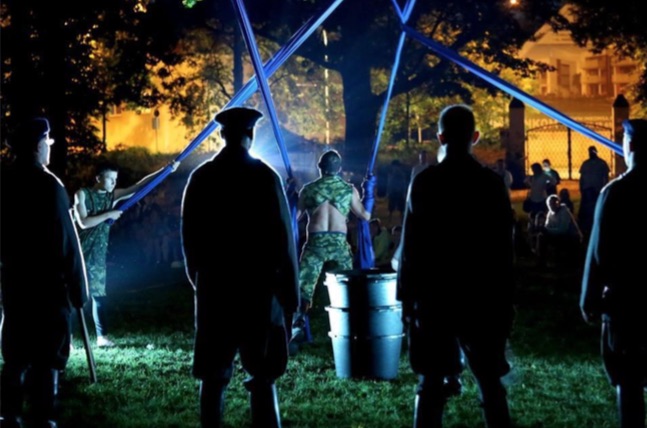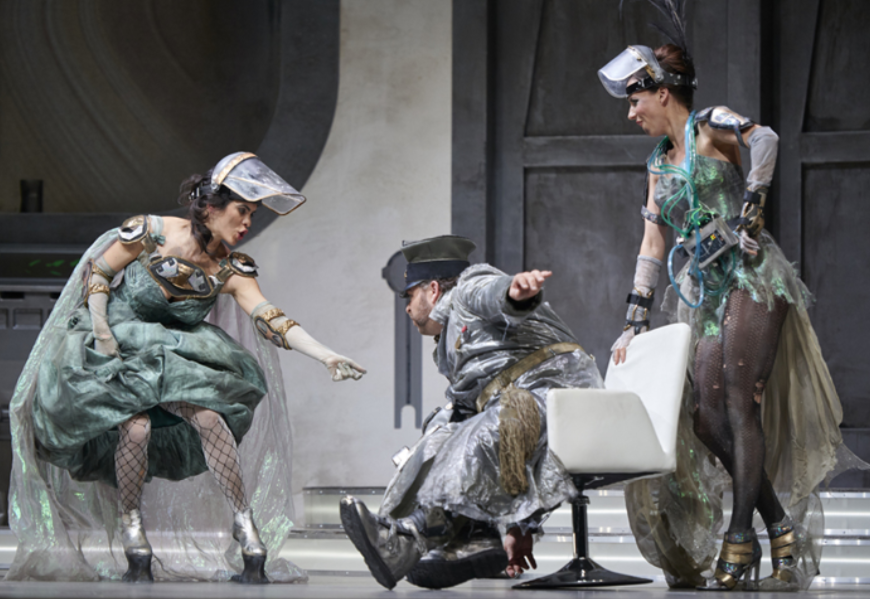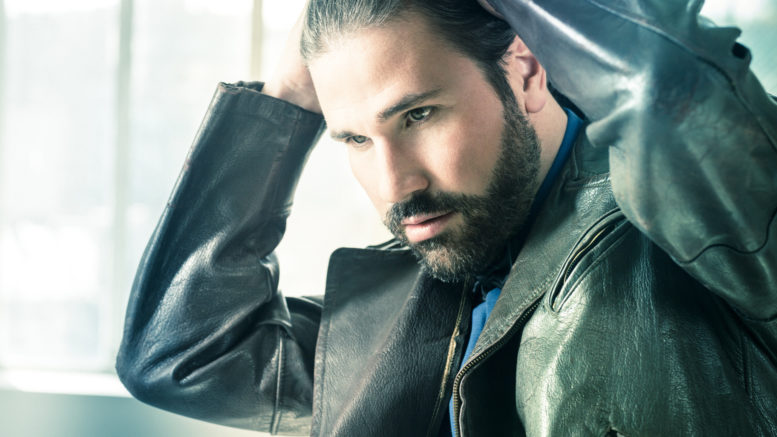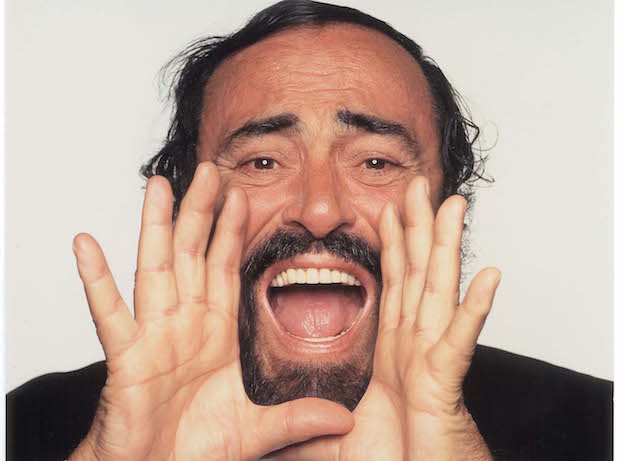
Can we call it an opera? Or was it a kind of the performance art? Or maybe a drama..? One is for sure – that was a true Art. What was it about? Breaking the boundaries. But not only that between the world of random people and that excluded ones. But between performance and reality, trying to find a balance and express the depth of the music, art. Michał Znaniecki, once again, created the world out of our lifes, stories. This time- combining The Soldier’s Tale (Stravinsky) with Purcell’s Fairy Queen and locating the set in a park.
It was the final performance of “The Voice of the Excluded” Project. Previously, Znaniecki was «looking for Lear», cooperating with the group of People out of Social Welfare Homes. They were among the Artists and they became Artists for that time, leading the audience through the Verdi’s story. The story of an old, «excluded» man, abandoned father of two daughters. The old people were the truth, telling their stories, about being abandoned by beloved children, loneliness, war times and sharing their true feelings. And audience got it, giving great round of applause after the final scenes.
This time- not Verdi, but Purcell and Stravinsky. Is it possible to combine the comedy with the story of an Soldier? The answer is- yes.

Open-air performance started with the Fairy Queen’s world. The story begun in the place of an old Amphitheatre, part of the Leśnicki Castle. Stage divided into two parts. Left side- drunk soldiers (and Poet), right- fairies. Different worlds, but approaching and uniting each other. Fairies singing, dancing and taking the audience to show their story. All of them, wearing khaki costumes (Adam Królikowski, Bogumił Wiśniewski). Soldiers- plain, typical, fairies- more feminine, looking like Amazons. With the words of “come all” the story begins. Audience follows the Fairy and moves to the next set- a group of Soldiers (a group of inmates from prison No. 2 in Wroclaw), drummers, telling the story of one of them (The Soldier’s Tale). But the story was changed, deeper understood, uncovered by Znaniecki. It was not about the pact with the devil, but about the true and historical evil. Soldier (Michał Koterski), facing extreme emotions- from fear to bravery, insecurity to being sure about his destination and needs. Balancing between adversities. Wanting the «freedom», to get out of the Army. The One, who deserted and was killed for it, executed, died from plenty of bullets. He really existed. He was Eddie Slovik- the only one American soldier executed for desertion since the Civil War. Koterski created that charecter, giving him all of the emotions, being not afraid of shouting and even doing a risky jump at the end of the scene. Eddie died in the Summer time. And, once again, according to this, audience meets the world of Fairy Queen. Oberon continues the story, Hermia and Lysander, run, looking for a way to the forest, disturbing the Oberon’s tale. They run and argue about which way they should go to get to the forest, choosing the wrong way and running one more time (arguing even more) and one more… It brought opposite emotions to the scene. Kind of contrast. One side- drummers, showing the cruelty and reality (even the aspect of women abuse and prostitution in the Army, in the clear, straightaway way. But, surprisingly- it was so true, that wasn’t vulgar). Another side- funny fairies’ argument. But maybe not so funny- because really similar to «ordinary» quarrels, nowadays… Music expresses the emotions even more.
Audience, leaded by Puck (Dmytro Cherednychenko) moves to another scene- the place at the lake. There, they could see and hear the beauty of Purcell’s music combined with Znaniecki’s deep and emotional direction. The most beautiful part of The Fairy Queen- Titania’s (Ewa Biegas) aria. Let me weep.. The passionate cry of an humiliated, humble, longing soul. The scream of the soul of abandoned and suffering woman. Biegas expressed all of that emotions. Her voice went through every sorrowful word, she gave the truth and made Titania alive. And that was the time, when the rain, like an echo, respond- once again- begun to fall… That created a kind of mystery, something which made this performance even more emotional and deep. The Heaven cried with Titania, giving some kind of “purification”, catharsis. Wiping away all the pain of Soldier’s Tale, the world of “excluded” people, giving a hope for a better future. It could not me more symbolic and beautiful.
That was the emotional side of that performance. But, as always, with Znaniecki’s productions there is a pure artistic, visual side- too, which makes the performance complete and alive. This time was not an exception. Well created choreography (Diana Theocharidis), illustrating the plot, like aerial evolutions made by a group of people from The Youth Centre of Social Therapy No. 2 in Wrocław, showing the Army’s world. The world of people’s inner battle, overcoming difficulties, facing problems. Visual side made also the lights (WaterConcept). 3D projections displayed at the water (fountain), created the atmosphere of mystery, magic and fairyland. Beautiful flowers, appearing at the lake, dancing man, mystery eye, or military projections were only a few of the impressive light shows.
The performance was like a conversation between people and artists, telling the emotional stories. The Artists were between the audience, close to them, making the plot a reality. Inviting the audience to the worlds of Stravinsky and Purcell. What was even more interesting- the contrast. The Soldier’s Tale and The Fairy Queen. Going through all of contradictions. Fairies- Soldiers, tale- reality. Znaniecki find a way to express the unexpressed part of both performances. To show the real feelings, inner battles of every single role. Audience, balancing between the emotional outbursts, felt them even more. Thanks to this oppositions too.
“The voice of the Excluded” (production- Magdalena Sowińska) was a really interesting project. Combining the professional Artists with the groups of “excluded” People, who gave even more truth to the stories created by composers. Their acting was convincing and really professional. It was not a kind of forced and «learned» roles, being shown at the stage but really emotional expression (theater workshops- Zofia Dowjat). They had an opportunity to meet the world of art, to get to know about working with theatre, to collaborate, relief the emotions, share the passion and became not the “excluded” but important part of the society. It had a really therapeutic power too. Not only for the Artists (professional and excluded) but as well for the audience. Showing that music and truth, combined together can outburst the emotions and give the new point of view on the Art.
Katarzyna Kubińska














